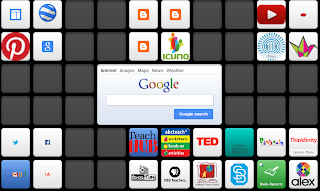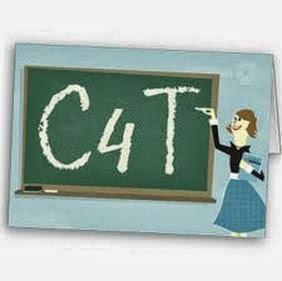Project-Based Learning Part-1
Experiences of a Third Grade Teacher
In
Project-Based Learning Part 1, Dr. Strange and Anthony Capps discuss the usage of project-based learning. Anthony Capps is a former student of EDM310 and is now a teacher in Baldwin County. Projects were once viewed as something you did at the end of a lesson to show what you had learned. Now, they are viewed as a way of teaching the material. Project-based learning is when you use actual projects to help students learn their objectives. Projects shouldn't just be used to reinforce what you have learned, but it should be a tool to learn. One example that Anthony gave us was a letter that his students wrote to Congressman Jo Bohner. He explained that each student wrote an individual letter and peer reviewed each one of their fellow classmates letters. They then picked the eight best letters and mailed them. This was a great way to show the importance of peer editing, collaboration, and project-based learning, which are very important tools to bring to the education system.
Project-Based Learning Part-2
This
video gave great insight on all aspects of a classroom. As a teacher not every parent or student will agree with your choice of teaching, and we have to expect that. There are no limits to learning, so we should never limit our students. Always encourage them to go above and beyond. Project-based learning is a great tool for students of all levels. Simple projects such as writing a narrative script can be useful in retaining information about certain subjects. Students have fun while they learn, and they actually want to learn the material. I think that students will be more eager to learn if the learning process presented is engaging for them. Project-based learning is just that. Students are learning to think for themselves. It’s like you’re handing them a lemon, and they make amazing lemonade out of it.>
iCurio
In the video,
iCurio, Anthony talks about what iCurio is. iCurio is a great tool for students to use and help them stay organized. Students can use iCurio to search websites that have been filtered for educational purposes. Students look up information on the internet all the time, but most of the time we forget where we got our information from. iCurio puts a stop to this, because it is a great way to retain information about the subjects we searched for. iCurio is a great program for students, because it will give them acceptable results when they search for information, and it is safe and secure. iCurio is also a great way to find course standard related topics.
Discovery Education
In
Discovery Education, we learn what Discovery Education is and why it is useful. Discovery Education is used for student searches, and teachers can use it to find fascinating videos that correlate to their lesson. Anthony says that by giving a child a video that goes along with their text, they are retaining a lot more information. Visual demonstrations help students retain the information. One of us has actually seen this program being used by one of our mentor teachers. She used interactive models, songs, and stories to help explain her lesson. The kids responded very well to this. This is definitely something we could benefit from in the classroom setting.
The Anthony-Strange Tips for Teaching-Miriah G.
In this
video, Dr. Strange talks to Anthony Capps, once again. He just finished his first year of teaching third grade at Gulf Shores Elementary School in Baldwin County.They both discuss the things that we as educators should prepare ourselves for when we become a teacher. They both give great tips such as: We must constantly learn and model that behavior, be flexible, and get your student engaged. The one that stands out to me most is, “It is hard work, but it can be fun if we let it be fun.” This is an statement I completely agree with.

While observing classrooms for my other classes, I have seen all the work that goes into being a teacher. I have heard a lot of people say that teachers just sit there and do nothing when their students are not there( for example, when they are in P.E. or at lunch), and I have personally seen that is not true. They are preparing for the student to come back, grading papers, rearranging the classroom, etc. This requires a lot of creativity, which is where the fun part comes in. Both Dr. Strange and Anthony Capps gave us some good tips to bring with us to the Teaching Field.
Additional Thoughts about Lessons-Demetrius H.
Anthony
tells us about the components of a lesson. Looking at a plan, we
must break it down into yearly, monthly, weekly and daily. There are a few questions we should ask ourselves when constructing a project for our students. Is this project meaningful?Will it cover the material needed to be learned? Can this project get my students’ attention? Will I be able to meet all of my goals? What can I do to measure their progress? Creating projects for a lesson plan is hard work, and it is not to be rushed. As a teacher, we should take our time and do it the right way.
Use of Tech. Don't Teach it- Michelle D
In
Use Technology- Don’t Teach It, Dr. Strange and Anthony talk about how to use technology in the classroom. Anthony tells us not to teach technology but to use it for assignments. Students in this century have the ability to learn how to use technology on their own. We learned this in the beginning of the course when we watched Dr. Mitra give children in third world countries computers, and they quickly taught themselves how to properly use them. Technology is something that children now are very familiar with.

Most of them could probably teach adults a few tricks. As a teacher, I would much rather use technology than paper supplies. Technology is free. Students who may not be able to afford paper supplies can definitely benefit by the classroom technology. They have a vast variety of different tools to use. It’s beneficial because they are learning the course objectives and learning to use those tools. We can show them how to do it, but we should let them teach themselves with their assignments. Students will be proud of what they have accomplished, and we will be proud that they have learned a new skill!








































